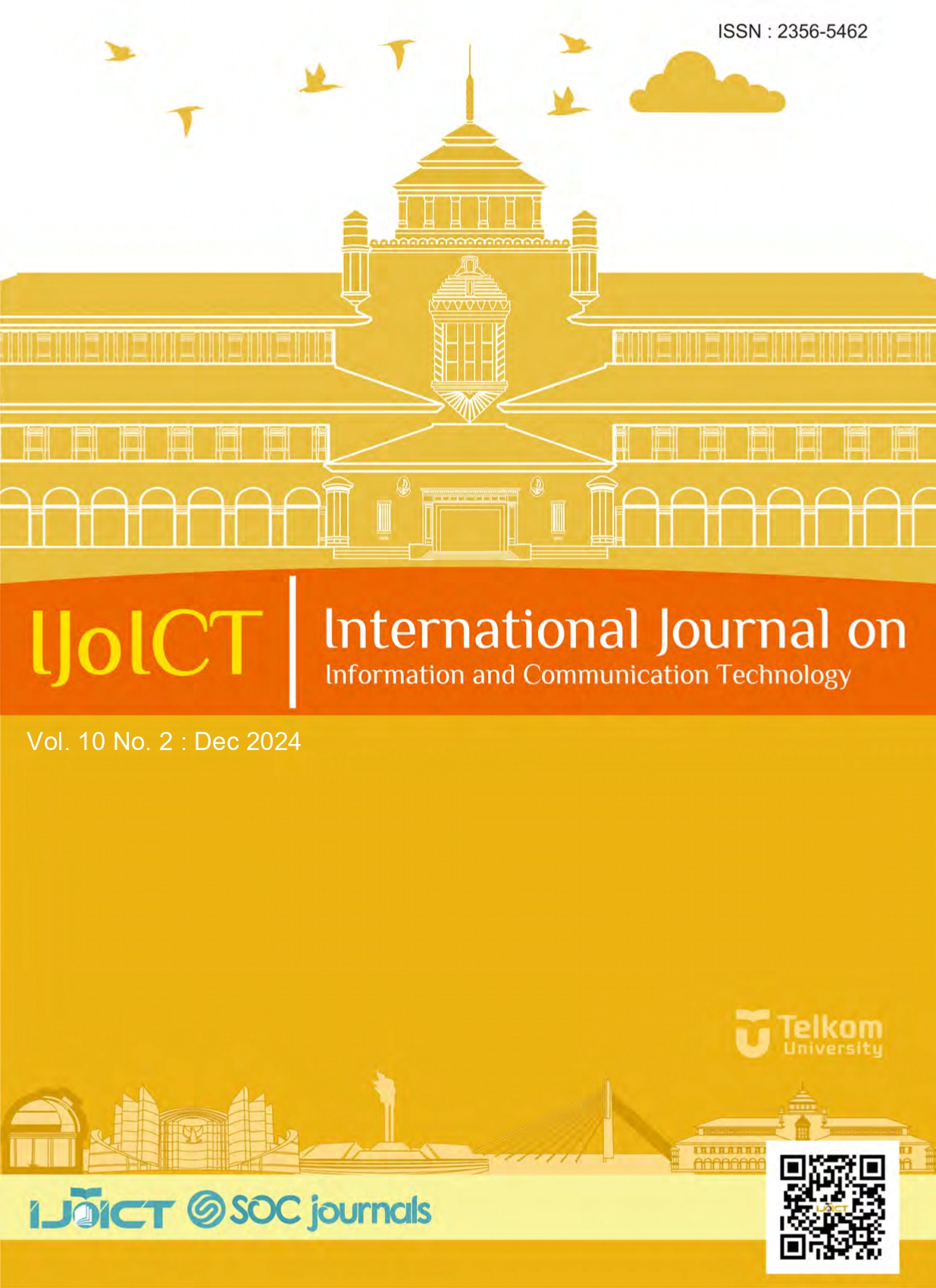Influences of Interaction Styles and Its Relation to Bloom’s Taxonomy on Level 3 Thinking Skills for Children at age 8-9 in Educational Application (Case Studies: Math Subject)
DOI:
https://doi.org/10.21108/ijoict.v10i2.1023Keywords:
User Experience, Interaction Styles, User-centered Design, Educational ApplicationAbstract
Educational application is one of the supplementary learning processes that help children to develop their thinking skills. One of the thinking skills is called application or third level (C3 level) in Bloom's Taxonomy for children aged 8 to 9 years. To help those children develop thinking skills, an educational application needs interaction styles to support and bear children in the learning process. The method to determine which interaction styles best suit children's C3 level thinking skills is by comparing two styles. The conclusion from the tests that have been carried out and the data generated for children aged 8-9 years is that the interaction style is form-filling. This interaction style had higher results and preferences in all three tests than the Direct Manipulation interaction style. Children had shorter average processing times, higher average scores, and preferred questions with the form-filling interaction style
Downloads
References
[1] Dosenpendidikan, “Taksonomi Bloom,” DosenPendidikan.Com, 28-Apr-2022. [Online]. Available: https://www.dosenpendidikan.co.id/taksonomi-bloom/. [Accessed: 23-Mar-2021].
[2] M. Soegaard, "26. Interaction Styles," Interaction Design Foundation, 30-Mar-2016. [Online]. Available: https://www.interaction-design.org/literature/book/the-glossary-of-human-computer-interaction/interaction-styles. [Accessed 21 May 2021].
[3] D. Oktaviana and I. Prihatin, “Analisis Hasil belajar siswa Pada Materi perbandingan Berdasarkan Ranah Kognitif revisi taksonomi bloom,” Buana Matematika : Jurnal Ilmiah Matematika dan Pendidikan Matematika, vol. 8, no. 2: pp. 81–88, 2018.
[4] N. Rahmalia, "User-centered Design: Prinsip untuk Pastikan Produk Keren dan Ramah Pengguna," Glints Blog, 11-Nov-2021. [Online]. Available: https://glints.com/id/lowongan/user-centered-design-adalah. [Accessed 21 May 2021]
[5] A. Seffah, N. Kececi, and M. Donyaee, “Quim: A framework for quantifying usability metrics in software quality models,” Proceedings Second Asia-Pacific Conference on Quality Software, pp. 311-318. 2001.
[6] I. Gunawan and A. R. Palupi, “Taksonomi Bloom – Revisi Ranah Kognitif: Kerangka Landasan Untuk Pembelajaran, Pengajaran, Dan Penilaian,” Premiere Educandum : Jurnal Pendidikan Dasar dan Pembelajaran, vol. 2, no. 02, 2016.
[7] D. Benyon, Designing user experience: A guide to HCI, UX and interaction design. Harlow, United Kingdom: Pearson Education Limited, 2020.
[8] A. Shanardi, "Tipe-Tipe Interaksi dengan User dalam User Interface," Binus University School of Information Systems, 03-May-2017. [Online]. Available: https://sis.binus.ac.id/2017/05/03/tipe-tipe-interaksi-dengan-user-dalam-user-interface/. [Accessed 21 May 2021]
[9] A. Cooper, D. Cronin, and R. M. Reimann, About face 3 the essentials of interaction design. Indianapolis: Wiley Publishing, 2007.
[10] C. Abras, D. Maloney-Krichmar, and J. Preece, "User-centered design." Bainbridge, W. Encyclopedia of Human-Computer Interaction. Thousand Oaks: Sage Publications, vol. 37, no. 4, pp.445-456, 2004.
[11] A. G. Fitridullah, E. Darwiyanto, and E. R. Kaburuan, "Perancangan Aplikasi Mobile Interactive dalam Penanaman Dan Pembentukan Karakter Anak Bangsa Dengan Metode User Centered Design." eProceedings of Engineering, vol. 5, no. 3, 2018.
[12] Mirabdolah, Arash and Alaeifard, Maryam and Marandi, Amir, "User-Centered Design in HCl: Enhancing Usability and Interaction in Complex Systems," International Journal of Advanced Human Computer Interaction, vol. 1, no. 1, page 16-33, 2023
[13] Al-Sa’di, Ahmed and McPhee, CAM Chris Allott, "User-centred design in educational applications: A systematic literature review," in 2021 International Conference Engineering Technologies and Computer Science (EnT), page 105-111, 2021
Downloads
Published
How to Cite
Issue
Section
License

This work is licensed under a Creative Commons Attribution 4.0 International License.
Manuscript submitted to IJoICT has to be an original work of the author(s), contains no element of plagiarism, and has never been published or is not being considered for publication in other journals. Author(s) shall agree to assign all copyright of published article to IJoICT. Requests related to future re-use and re-publication of major or substantial parts of the article must be consulted with the editors of IJoICT.








.png)

.jpg)




